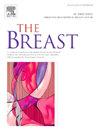Socioeconomic disparities and osteoarthritis impact hormone therapy adherence in breast cancer
IF 7.9
2区 医学
Q1 OBSTETRICS & GYNECOLOGY
引用次数: 0
Abstract
Purpose
Adherence to adjuvant hormone therapy (AHT) is critical for improving survival in breast cancer patients. This study examines how socioeconomic disparities, osteoarthritis (OA), and OA symptom onset timing influence AHT adherence and survival outcomes.
Patients and methods
This retrospective cohort study included 33,142 women with invasive breast cancer (2011–2015) from the Korean National Health Insurance Service. Group-based trajectory modeling (GBTM) identified AHT adherence patterns based on the proportion of days covered (PDC) over five years. Competing risk regression and Cox models assessed the impact of socioeconomic factors, pre-treatment OA, NSAID use, and other variables on AHT discontinuation and survival.
Results
GBTM revealed two adherence patterns: high adherence (83.4 %) and low adherence (16.6 %), with the latter showing a rapid decline in PDC. The low adherence group had a significantly higher risk of treatment discontinuation (SHR: 14.06; 95 % CI: 12.50–14.96; p < 0.001) and mortality (HR: 3.56; 95 % CI: 3.09–4.09; p < 0.001). A longer OA history before AHT (p = 0.001) and pre-AHT NSAID use (p < 0.001) were linked to higher discontinuation risk. Patients with Medical Aid/Veteran insurance (OR: 0.60; 95 % CI: 0.53–0.67; p < 0.001) and those in non-capital regions (OR: 0.74; 95 % CI: 0.69–0.79; p < 0.001) were less likely to show high adherence.
Conclusion
AHT adherence is influenced by socioeconomic factors, pre-existing OA, and OA symptom timing, affecting survival outcomes. Tailored interventions are needed to improve AHT adherence and survival.
社会经济差异和骨关节炎对乳腺癌患者坚持激素治疗的影响
目的:坚持辅助激素治疗(AHT)是提高乳腺癌患者生存率的关键。本研究探讨了社会经济差异、骨关节炎(OA)和OA症状发作时间对AHT依从性和生存结果的影响。患者和方法本回顾性队列研究纳入了来自韩国国民健康保险服务中心的33142名浸润性乳腺癌患者(2011-2015年)。基于组的轨迹模型(GBTM)根据5年的覆盖天数(PDC)比例确定了AHT的依从性模式。竞争风险回归和Cox模型评估了社会经济因素、治疗前OA、NSAID使用和其他变量对AHT停药和生存的影响。结果gbtm呈现高依从性(83.4%)和低依从性(16.6%)两种依从性模式,低依从性PDC下降较快。低依从性组停药风险显著增高(SHR: 14.06;95% ci: 12.50-14.96;p & lt;0.001)和死亡率(HR: 3.56;95% ci: 3.09-4.09;p & lt;0.001)。AHT前的OA病史较长(p = 0.001)和AHT前使用非甾体抗炎药(p <;0.001)与较高的停药风险相关。医疗救助/退伍军人保险患者(OR: 0.60;95% ci: 0.53-0.67;p & lt;0.001)和非首都地区(OR: 0.74;95% ci: 0.69-0.79;p & lt;0.001)表现出高依从性的可能性较小。结论aht依从性受社会经济因素、既往OA和OA症状时间的影响,影响生存结果。需要有针对性的干预措施来提高AHT的依从性和生存率。
本文章由计算机程序翻译,如有差异,请以英文原文为准。
求助全文
约1分钟内获得全文
求助全文
来源期刊

Breast
医学-妇产科学
CiteScore
8.70
自引率
2.60%
发文量
165
审稿时长
59 days
期刊介绍:
The Breast is an international, multidisciplinary journal for researchers and clinicians, which focuses on translational and clinical research for the advancement of breast cancer prevention, diagnosis and treatment of all stages.
 求助内容:
求助内容: 应助结果提醒方式:
应助结果提醒方式:


